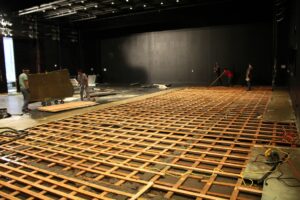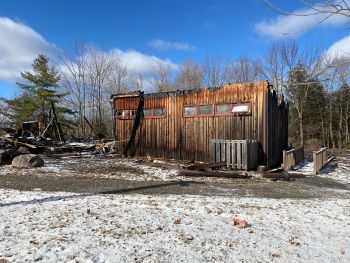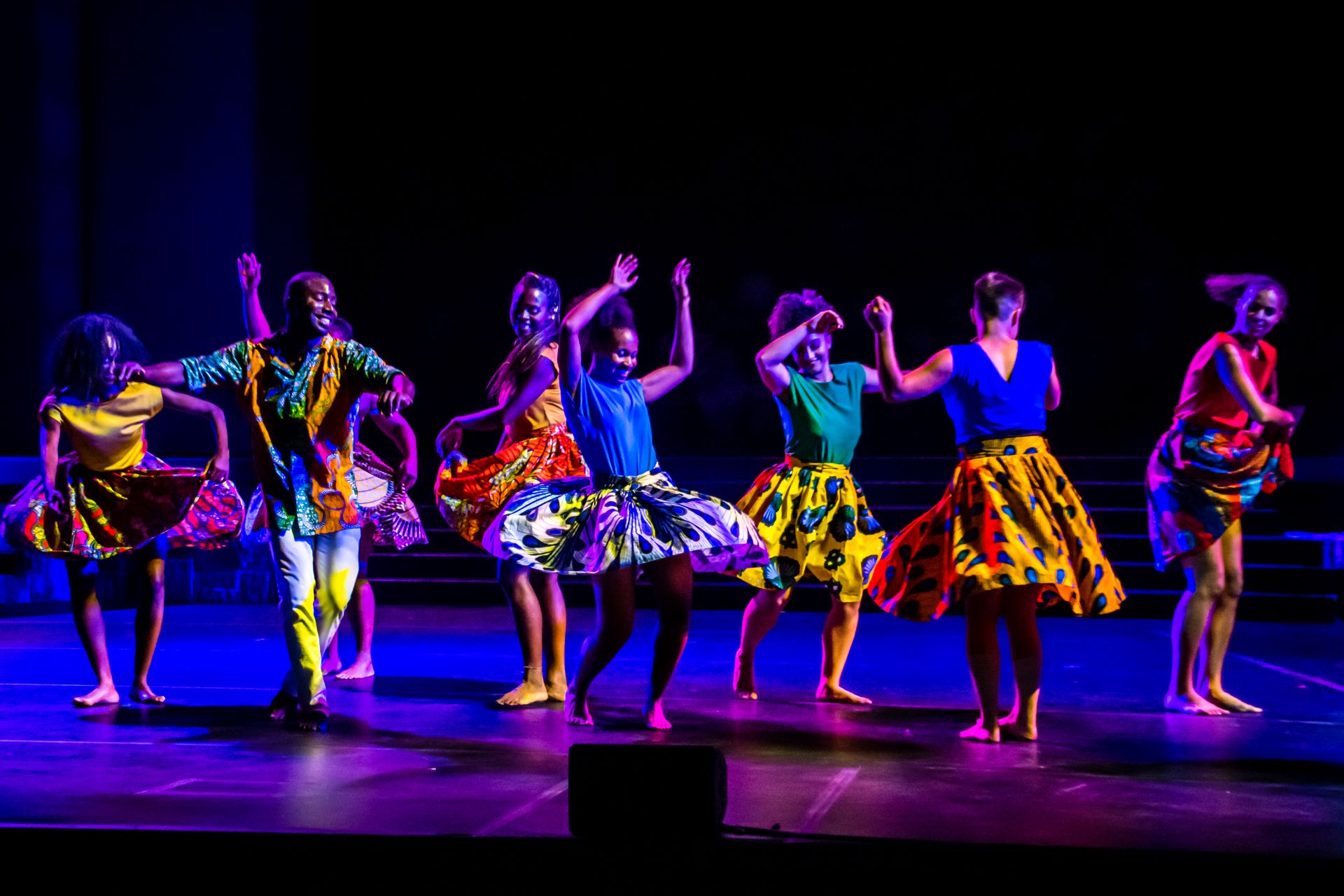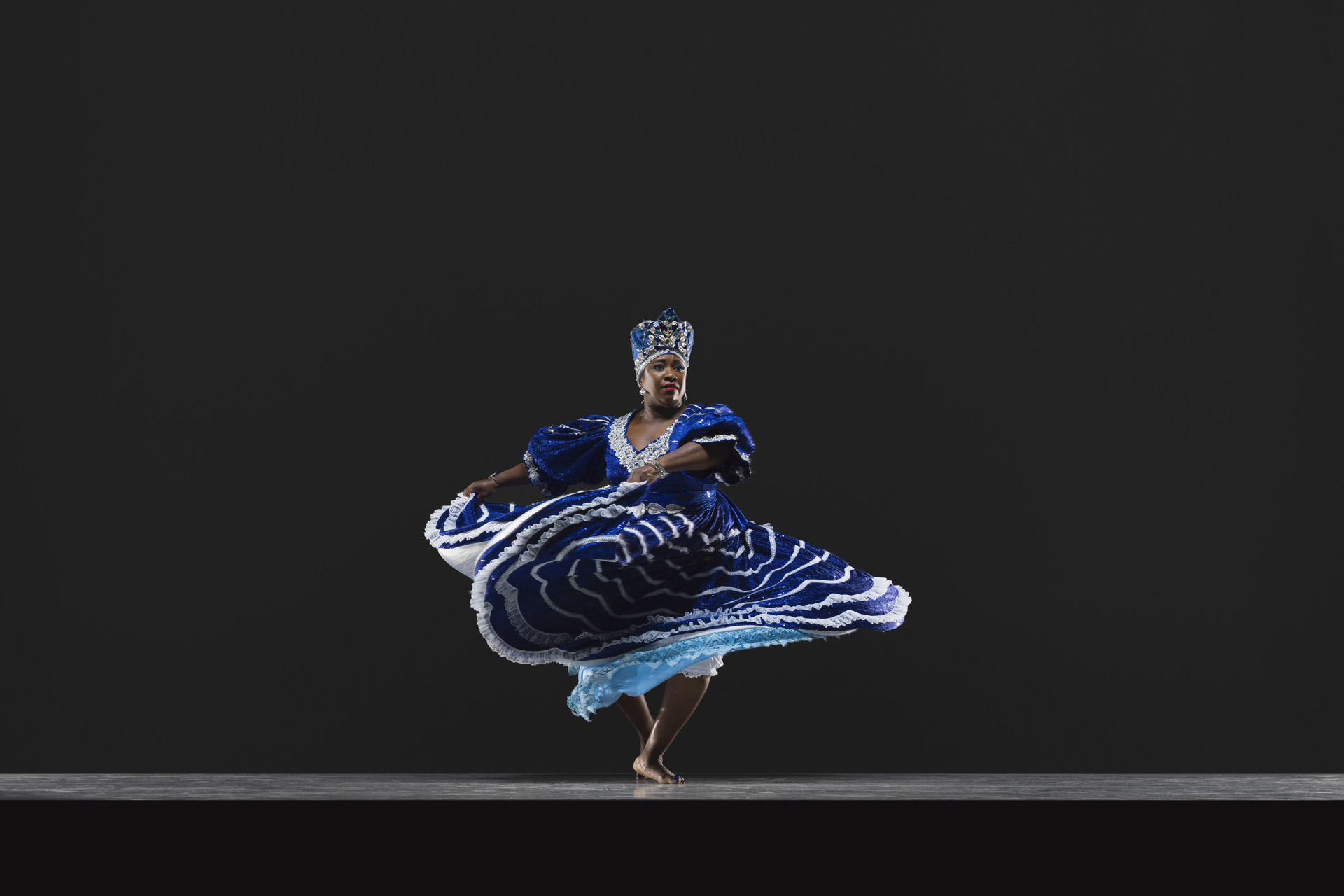By Tom Clareson and Janet Newcomb
For more than four years, beginning with the flooding and winds of Hurricane Harvey in 2017, through the storms of Hurricanes Irma and Maria which followed, to the recent damage caused in many areas of the United States by Hurricane Ida, the dance world has seen an unprecedented number of natural disasters. In the Western U.S., wildfires and drought have disrupted the lives of artists and communities. Worldwide, of course, the largest public health disaster in a century, the ongoing COVID-19 pandemic, has led dance and arts organizations through a precarious cycle of closings and reopenings.
How can dance artists and organizations cope with this barrage of threats and disruptions? By building institutional capacity and resilience, and making decisions about the future of your organization, you can take important steps to strengthen your organization or practice through this unparalleled era.
*****
We have heard about the need to develop disaster recovery and continuity of operations plans, but in a period when we must quickly decide on when and how to open or close our organizations, planning just seems like an additional burden that monopolizes our time and might never get implemented. However, we have recently heard many stories about organizations with disaster plans in place that regularly review and practice them. Anecdotal evidence has shown that they are the companies that more readily re-open and return to activity and revenue.
All-Hazards Disaster Response

In 2017, Hurricane Harvey damaged Houston Ballet’s Center for Dance first floor dance lab requiring the floor to be rebuilt. Photo courtesy of Houston Ballet.
One of the most important steps of disaster planning, due to the variety of emergencies, disasters, and disruptions we are experiencing at present, is to develop an All-Hazards Disaster Response plan for your organization, dance studio, or artistic practice. Determining the key weather threats in your area, your proximity to highways, railroads, and industrial buildings, and other potential risk factors is important so you can build a plan to address the threats most likely to cause problems nearby. Local and state arts organizations, and regional and national arts service organizations have tools and resources available to help you determine these risks as you begin to build your plan. These include the National Assembly of State Arts Agencies, U.S. Regional Arts Organizations, Performing Arts Readiness, and National Coalition for Arts’ Preparedness and Emergency Response.
It is important to reach out to the organizations named above, as well as to other arts and safety service providers, as you build your network of partners to help with any future disaster damage. Few of us probably had our local public health department on speed dial prior to the COVID-19 pandemic, but now we recognize these agencies as a valuable resource to help us determine if it is safe to conduct in-person rehearsals, studio classes and performances in our regions, or whether we need to consider virtual options.
Reach Out to Your City, County and State Agencies
Another important group of people to include in your disaster plan are the city, county or regional emergency managers in your area. How recently has a fire inspector walked through your building to identify safe ways to enter, or even more important, how to evacuate if a disaster occurs? In many cities or counties (for example, we have worked with fire department staff in Philadelphia and Cleveland) fire fighters or fire safety experts will conduct a free walk-through of your building to determine safety threats, such as poor or dangerous storage, electrical fire risks, and parts of your building that sit below grade and are susceptible to flooding, among other hazards. Fire personnel can also provide your staff with training on using fire extinguishers and other safety systems. Local police can help identify areas of high risk for traffic accidents and other potential emergencies. Many U.S. cities and almost all counties and states have emergency managers who can provide information and training on how to deal with large-scale disasters of many types, including active shooter scenarios, sheltering in place and other occurrences.
Your local and state arts agencies are sources of both potential grant funding and information on safety practices. Such organizations as Greater Hartford Arts Council in Connecticut, ArtsFairfax in Northern Virginia, and the Santa Barbara County Office of Arts & Culture in California have focused specifically on emergency and disaster planning in the past year by offering their constituents training and office hours where management and staff talk directly with recovery experts about specific concerns for their own institutions.
In 2012, when Superstorm Sandy flooded the Martha Graham Center of Contemporary Dance’s archives, it was one of the most dramatic disaster impacts we have seen in the dance world. While the organization had planned for some types of emergencies, the enormity of this situation, including damaged sets and costumes, was unexpected and challenging. (Take a look at Executive Director LaRue Allen’s perspective on the event here.) In dealing with a disaster of this magnitude, we have learned that to achieve resilience, we must wage a constant battle of plugging the holes in the dike, remaining buoyant, and doing more than just treading water.
Dance Service Organizations Can Help
Dance/USA has been offering conference sessions on disaster preparedness and response on an annual basis, either live or online in recent years. Additionally, the organization has provided “office hours” consultations on this topic for its members. The International Association of Blacks in Dance, based in the Washington, D.C., area, and with members nationwide and across the world, initiated a program to help organizations develop disaster plans in the Washington, D.C., region. Their disaster consultant Carol Foster is like a “circuit rider” working with dance companies and organizations to develop custom plans covering issues like business continuity and succession planning, as well as emergency preparedness. Now IABD’s successful regional model is expanding to its national network of members.
In the Bay Area and Northern California, World Arts West helps its members and constituents examine issues including availability of rehearsal and performance space, and considerations for finding alternative locations when spaces shut down for health, safety, or other reasons. Amid restrictions due to the global pandemic, Regional Dance America, a collaborative organization of pre-professional companies from across the U.S., pivoted from its history of well-attended on-site regional festivals to an online scholarship and recruitment process (which the group plans to continue even after the pandemic), virtual master classes on Instagram Live, and the first online version of its nearly 60-year-old National Choreography Institute. (See “Pivoting Your Programs Increases Possibilities: A Case Study from Regional Dance America.”
A number of dance companies have made huge changes in their practices during the pandemic, and are seeing success from their bold moves. Among them is Dance Theatre of Harlem, which made numerous strategic moves and alliances to enable the company to continue working. Whether it was joining the regular (daily at the start of the pandemic and now a few times a week) calls of the “NYC Culture @3” group in New York City, which meets via phone to discuss shared recovery and reopening issues, or the embrace of virtual performances, the company has been a model of resilience. Mounting a digital platform in 2020 to allow the public to see historic archived performances as well as educational and informational activities, the “DTH on Demand” online series gained huge audiences nationally and worldwide for some of the company’s most famous productions.
After a structural fire destroyed the Doris Duke Theatre at Jacob’s Pillow in Massachusetts in November 2020, the venerable organization moved forward with performances in other settings on its campus in 2021. During the summer, when many presenters moved performances outside whenever possible, Jacob’s Pillow drew headlines for consulting with a local meteorologist about weather conditions, which could affect their planned events. Paul Caiano, a meteorologist from Albany, N.Y., gained national attention in this role, even garnering an article and photos in The New York Times. Those organizations that utilize outdoor spaces for rehearsals, classes, performances, tapings, etc., could take a cue from Jacob’s Pillow and form alliances with local television and radio weather staff – a move that might also generate free publicity for your organization!
If you have reopened or are reopening your organization to the public soon, several guidelines have become industry standards during the pandemic. For dance organizations, presenters, and companies that own their own buildings or rehearse and perform at other locations, a good resource is the “Event Safety Alliance (ESA) Reopening Guide.” ESA has teamed with other leaders in the live performance industry, including the National Independent Venue Association (NIVA) and Association of Performing Arts Professionals (APAP) among others to develop a brief and even more current checklist for reopening called “Safe in Sound.” Recently, Whippoorwill Arts, a support organization for roots musicians and artists, released “Safety Guidelines for Musicians,” which looks at suggested language that individual artists and small performing groups can use to stay safe when performing.
Don’t Forget Insurance and Liability Issues

Jacob’s Pillow’s famed Doris Duke Theatre after a November 17, 2020, fire destroyed it. Photo courtesy of Jacob’s Pillow.
Another facet of disaster preparedness and recovery, which many organizations and artists are grappling with, is insurance and liability issues. Do you or your organization have sufficient insurance in case of illness or an accident at your rehearsal or performance site? This is a more difficult issue to find checklists and guidelines on, and we suggest reaching out to your organization’s legal counsel, local chapters of Volunteer Lawyers for the Arts, or groups specializing in insurance for artists and arts organizations.
Unfortunately, some organizations may not survive the pandemic or other natural disasters. We have heard from a number of smaller dance and arts institutions where the founding directors or other administrators have decided to retire, merge with compatible organizations, or bring operations to a close. After seeing stories of a number of these situations, the National Coalition on Arts’ Preparedness and Emergency Response (NCAPER), a national group of arts service organizations and funders with a focus on disaster preparedness and response, has published the “Arts Organizations at a Crossroads: Toolkit for Managing Transitions and Preserving Assets.” This publication, developed and written by Mollie Quinlan-Hayes, looks at difficult issues including when to make legal and structural choices for the future of your organization; ensuring you protect your most important knowledge assets (including staff, patron and business records); and managing and preserving your legacy.
This last point, making sure you are saving organizational and performance history, is also an area that Dance/USA’s Archiving and Preservation Program excels at to a level not seen in many other arts fields. Do not overlook your company’s costumes, props, musical and choreographic scores, and other tangible historical items your organization has collected over the years, which can provide a rich history of your artistic body of work.
NCAPER, as noted, provides a number of tools for dance organizations planning for or recovering from disasters, including a new “Arts Field Guide to Federal Disaster Relief” and other information and advocacy documents. The Performing Arts Readiness (PAR) project, an initiative that helps performing arts organizations nationwide learn how to protect their assets, sustain operations, and be prepared for emergencies, offers live online and recorded webinars led by national experts on subjects varying from Fire Protection to Cybersecurity and Crisis Communications. The PAR project also has case studies on disaster resilience efforts — many from the dance community — and offers grants and information to develop local disaster networks and institutional disaster plans.
As we continue to weather increasing natural and human-made storms, it is important for dance organizations to know that support structures are available to help you develop disaster plans and response strategies. PAR and NCAPER staff often work with individual institutions affected by disasters throughout their road to recovery, including the recent aftermath of 2021’s Hurricane Ida.
Although sometimes it may feel like you’re a soloist in the face of an unexpected disaster, your organization does not need to go it alone. A variety of resources are available for you to weather the storm and come through to the other side.

Photo by Sam Mitchell, LYRASIS
Tom Clareson is project director of Performing Arts Readiness, funded by the Andrew W. Mellon Foundation to help performing arts organizations protect their assets, sustain operations, and prepare for emergencies. He also serves as senior consultant for digital and preservation services at LYRASIS, consulting internationally on preservation, disaster preparedness, digitization, funding, strategic planning, and advocacy for arts and cultural organizations. Clareson is vice president of the board of directors for the Foundation for Advancement in Conservation, board of directors’ secretary of LancasterChorale (Ohio), and vice president of the national Board of Advisors of the Richard M. Ross Art Museum at Ohio Wesleyan University. He has experience teaching graduate-level courses for the University of Texas at Austin, University of California-Los Angeles, and University of Illinois Urbana-Champaign.

Photo by Alexandra Elise Photography
Prior to becoming executive director of National Coalition for Arts’ Preparedness & Emergency Response and the performing arts coordinator for the Performing Arts Readiness Project in 2017, Jan Newcomb directed eight arts organizations including the Rochester Philharmonic Orchestra, Charleston Symphony Orchestra, four arts councils and a community arts center. She served as director of grants at the South Carolina Arts Commission and taught modern dance at the University of Buffalo and the University of South Carolina. Jan consulted on leadership transition and fund development for arts organizations from 2009 to 2015 and designed the Master of Arts in Leadership in the Arts & Entertainment Industries Program at NYIT in Manhattan. Jan holds a B.A. in music from Hood College and an M.A. in dance from The George Washington University.
____
We accept submissions on topics relevant to the field: advocacy, artistic issues, arts policy, community building, development, employment, engagement, touring, and other topics that deal with the business of dance. We cannot publish criticism, single-company season announcements, and single-company or single artist profiles. Additionally, we welcome feedback on articles. If you have a topic that you would like to see addressed or feedback, please contact communications@danceusa.org.
Disclaimer: Opinions expressed in guest posts do not necessarily represent the viewpoints of Dance/USA.




